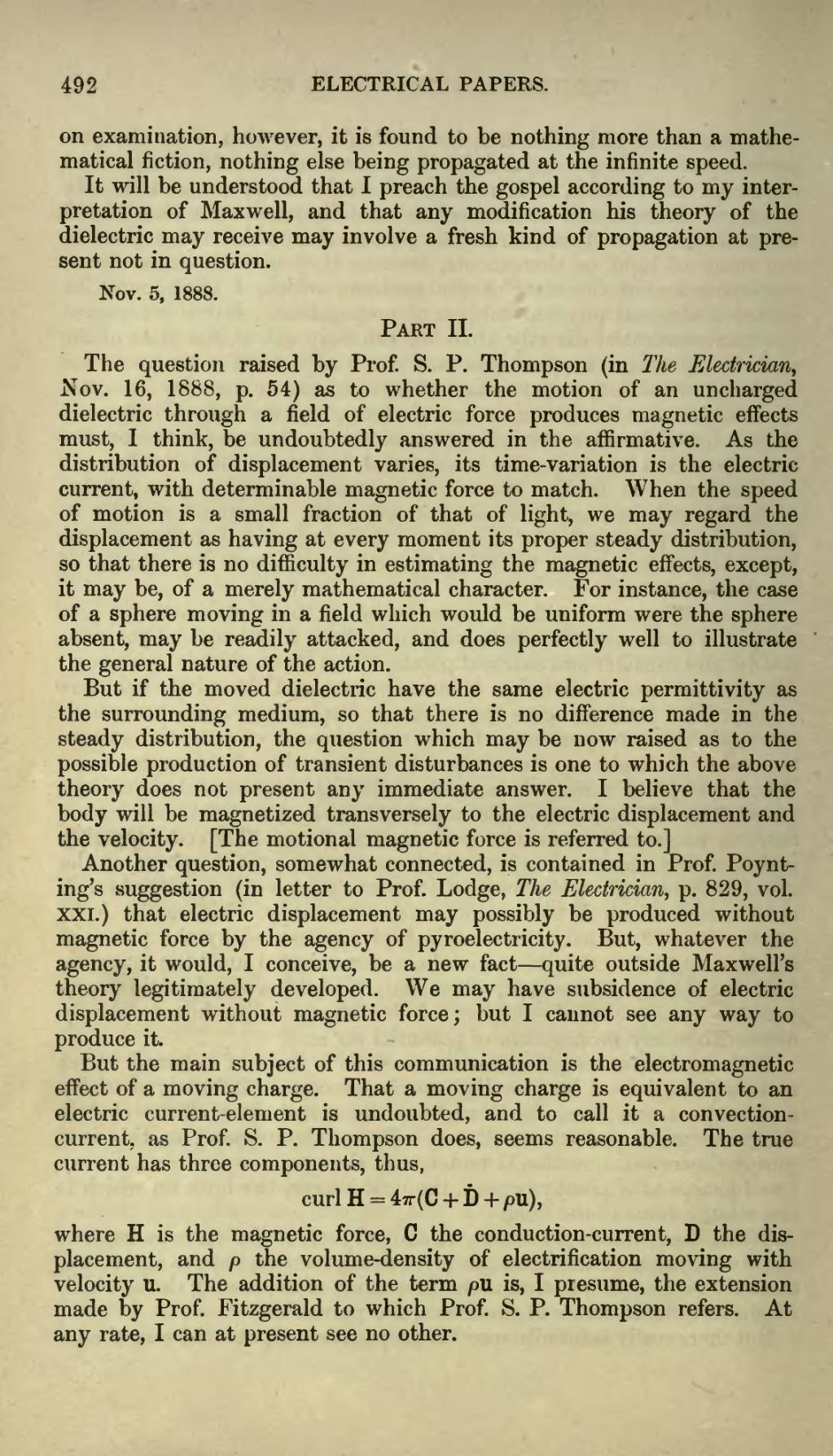on examination, however, it is found to be nothing more than a mathematical fiction, nothing else being propagated at the infinite speed.
It will be understood that I preach the gospel according to my interpretation of Maxwell, and that any modification his theory of the dielectric may receive may involve a fresh kind of propagation at present not in question.
Nov. 5, 1888.
Part II.
The question raised by Prof. S. P. Thompson (in The Electrician, Nov. 16, 1888, p. 54) as to whether the motion of an uncharged dielectric through a field of electric force produces magnetic effects must, I think, be undoubtedly answered in the affirmative. As the distribution of displacement varies, its time-variation is the electric current, with determinable magnetic force to match. When the speed of motion is a small fraction of that of light, we may regard the displacement as having at every moment its proper steady distribution, so that there is no difficulty in estimating the magnetic effects, except, it may be, of a merely mathematical character. For instance, the case of a sphere moving in a field which would be uniform were the sphere absent, may be readily attacked, and does perfectly well to illustrate the general nature of the action.
But if the moved dielectric have the same electric permittivity as the surrounding medium, so that there is no difference made in the steady distribution, the question which may be now raised as to the possible production of transient disturbances is one to which the above theory does not present any immediate answer. I believe that the body will be magnetized transversely to the electric displacement and the velocity. [The motional magnetic force is referred to.]
Another question, somewhat connected, is contained in Prof. Poynting's suggestion (in letter to Prof. Lodge, The Electrician, p. 829, vol. xxi.) that electric displacement may possibly be produced without magnetic force by the agency of pyroelectricity. But, whatever the agency, it would, I conceive, be a new fact—quite outside Maxwell's theory legitimately developed. We may have subsidence of electric displacement without magnetic force; but I cannot see any way to produce it.
But the main subject of this communication is the electromagnetic effect of a moving charge. That a moving charge is equivalent to an electric current-element is undoubted, and to call it a convection-current. as Prof. S. P. Thompson does, seems reasonable. The true current has three components, thus,
,
where H is the magnetic force, C the conduction-current, D the displacement, and ρ the volume-density of electrification moving with velocity u. The addition of the term ρu is, I presume, the extension made by Prof. Fitzgerald to which Prof. S. P. Thompson refers. At any rate, I can at present see no other.

